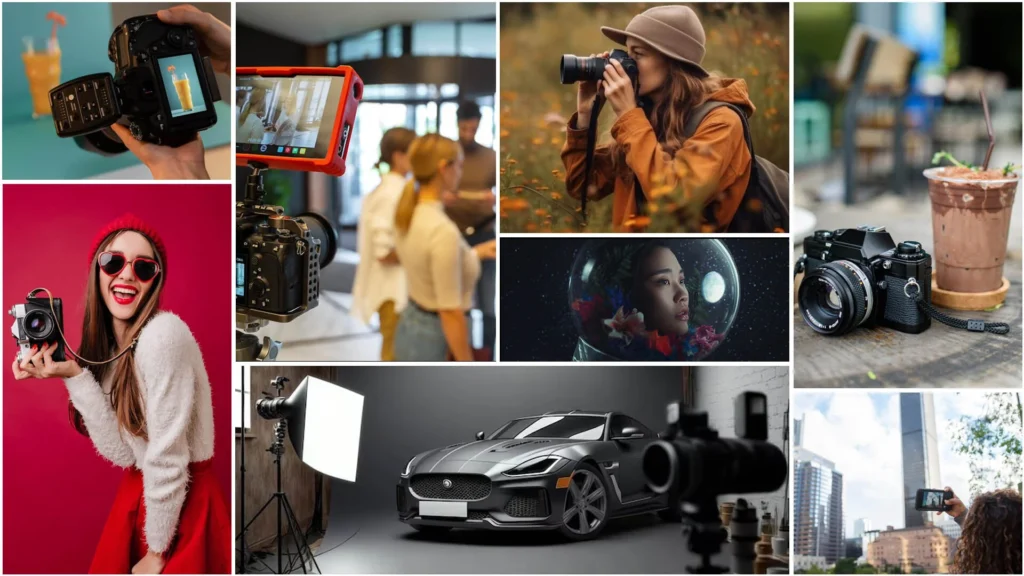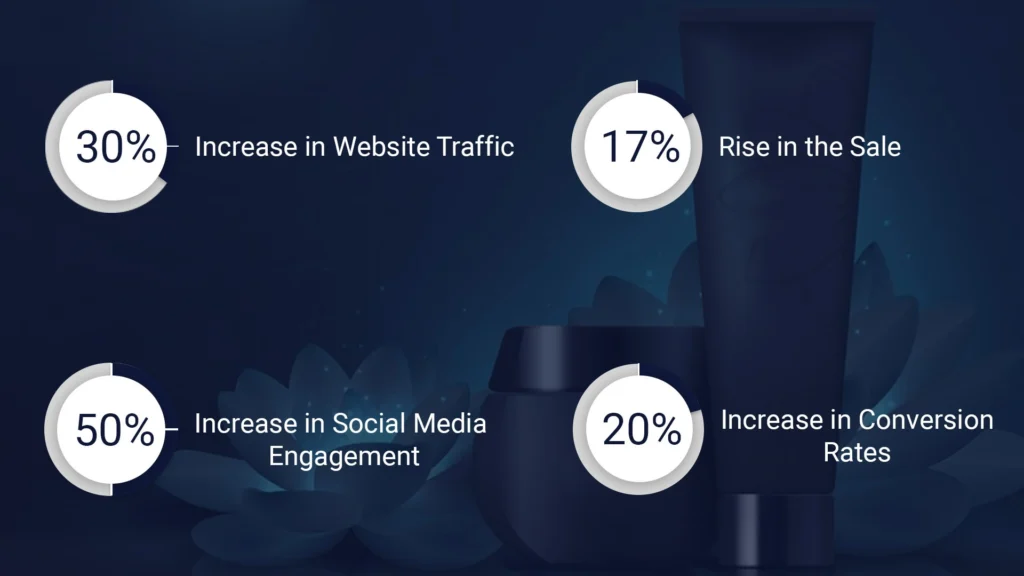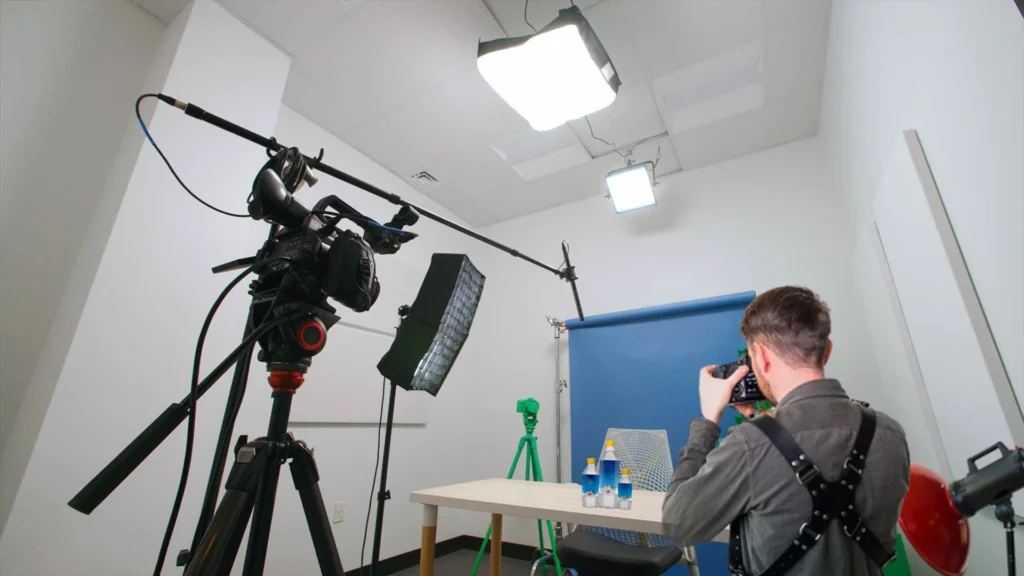Visual content has become increasingly important in capturing and engaging audiences. Advertising photography is crucial in creating compelling images that promote products, tell stories, evoke emotions, and convey brand messages. In this blog, we will explore the fascinating world of product advertising photography and its significance in the realm of marketing and communication. We will explore the techniques, strategies, and creative processes behind it and its impact on consumer behavior and brand perception.
Join us as we uncover the artistry and technical prowess that goes into capturing the perfect shot. Discover how lighting, composition, and visual storytelling combine to create striking visuals that resonate with audiences. We will explore various types of advertising photography, from product and fashion to food and lifestyle, understanding how each genre contributes to different marketing objectives.
We will also examine the role of product advertising photography in the digital landscape, where e-commerce and online platforms dominate consumer behavior. Learn how visually appealing and informative product images drive online sales and establish brand credibility in a highly competitive market.
So, let’s embark on this visual journey together and explore the captivating world of advertising photography!
What is Advertising Photography
Advertising photography is a specialized genre of photography that focuses on creating images for promotional or advertising purposes. The main goal is to attract and engage the target audience, effectively communicate the brand’s message, and generate interest in a product, service, or concept. Here, photographers work closely with art directors, designers, and marketing professionals to develop visual ideas that align with the brand’s identity and marketing objectives. They collaborate to create images that effectively convey the desired message and evoke the desired emotions from the viewers.
Advertising photography involves capturing high-impact images designed explicitly for advertisements. These images are carefully selected and published to encourage audience engagement. They highlight key elements that grab attention and resonate with the target audience, ultimately serving the purpose of the advertising campaign.
Advertising photographers use various techniques, including lighting, composition, props, and models, to create visually appealing and compelling images. They often work in studio settings but may also shoot on location, depending on the requirements of the advertising campaign.
Types of Advertising Photography

There are various types, each with its unique characteristics and purposes. Here are 8 common types of advertising photography:
1. Product Photography
Product photography focuses on showcasing a specific product or range of products in a visually appealing and informative manner. The images highlight the product’s features, details, and benefits to entice potential customers. Moreover, Product photography is commonly used in catalogs, e-commerce websites, print ads, and packaging materials.
2. Fashion Photography
Fashion photography involves capturing clothing, accessories, or fashion-related products artistically and stylishly. These images are often used in fashion magazines, advertisements for clothing brands, online fashion retailers, and promotional campaigns.
3. Food and Beverage Photography
Beverage and Food photography aims to make food and drinks appealing. These images are commonly seen in menus, cookbooks, food packaging, restaurant photography/advertisements, and social media posts.
4. Lifestyle Photography
Lifestyle photography showcases a product or service used in real-life situations, capturing the desired lifestyle and aspirations associated with the brand. Moreover, these images often evoke emotions and personally connect with the target audience. Lifestyle photography is used in various industries, including travel, fitness, wellness, automotive, and more.
5. Corporate Photography
Corporate photography portrays businesses, employees, facilities, and corporate events. It aims to create a professional and trustworthy company image and is often utilized in corporate brochures, annual reports, websites, and advertisements.
6. Car Photography
Car photography focuses on appealingly capturing automobiles, motorcycles, or other vehicles. These images are used in automotive advertisements, brochures, magazines, and online platforms.
7. Real Estate Photography
Real Estate Photography showcases buildings, structures, or interior spaces, emphasizing design, aesthetics, and functionality. These images are commonly used by architects, interior designers, real estate agencies, and the hospitality industry for marketing purposes.
8. Conceptual Photography
Conceptual photography involves creating images that convey abstract ideas, concepts, or emotions. It often requires creative and imaginative approaches to communicate a message or tell a story visually. Conceptual photography is used in advertising campaigns to evoke thought and engage viewers.
Why Product Advertising Photography is Important
Product photography has a significant impact on consumers’ first impressions. High-quality and consistent product images can immediately capture potential customers’ attention and encourage further engagement.

Product advertising photography is crucial for several reasons:
1. Visual Impact: Engaging product images capture attention and leave a lasting impression on potential customers. They stand out amidst the vast visual content and create interest in the product.
2. Descriptive and Informative: Product photography showcases the product’s features, details, and functionality, allowing customers to visualize and understand what they can expect.
3. Brand Representation: The quality and style of product photography reflect the brand’s image and values. Consistent and visually appealing images establish a strong brand identity and help customers recognize and connect with the brand.
4. Online Sales and E-commerce: With the rise of online shopping, high-quality product images are crucial for driving sales. Customers rely on visuals to assess the product’s quality, and compelling photography can increase confidence and trust, leading to more conversions.
5. Competitive Advantage: Well-executed product photography can set a brand apart from competitors. By showcasing unique features or appealingly presenting the product, it helps grab attention and differentiate the brand in a crowded market.
6. Marketing and Advertising Campaigns: Product images are central to marketing and advertising efforts. They are used in various channels, such as print ads, websites, social media, and catalogs, to communicate product benefits, evoke desire, and persuade customers to take action.
Product advertising photography plays a vital role in capturing attention, conveying product information, representing the brand, driving online sales, gaining a competitive edge, and supporting effective marketing campaigns.
What Is The Role Of Photography In Advertisement: How To Make Use Of It?
In the digital age, the significance of good photography has increased exponentially for businesses aiming to market their offerings. Photos possess the ability to seize attention and evoke emotional responses in potential customers, ultimately driving conversions. However, many businesses struggle with effectively utilizing photography in their advertising strategies. Discover below the role of photography in marketing and learn how businesses can leverage it to boost conversion rates.
1. Social Media Images
In the era of social media, compelling visuals are essential to complement your text-based posts. Moreover, platforms like Instagram and Pinterest rely heavily on visuals; a high-quality photo can set you apart. Additionally, ensure your images align with your brand and resonate with your target audience. Furthermore, collaborating with a talented photographer to create stunning visuals and establish a robust social media presence. By doing so, you will attract new customers and foster business growth.
2. Product Photos
Product photos are essential for effective marketing, as they showcase your offerings in the best possible light. Ensure your product photo editing are high-quality, clear, and well-lit, allowing potential customers to see what they’re buying. Consider hiring a professional photographer or using a good-quality camera to capture appealing images. Additionally, incorporate lifestyle photos to help customers envision how your products can enhance their everyday lives. Present your products in a way that you can be proud of and that resonates with your target audience.
3. Billboards and Signs
Utilize photography to create visually striking billboards and signage for your brick-and-mortar location. In doing so, this effective approach grabs attention and entices potential customers. Additionally, ensure your images are high quality and easily visible from a distance. Furthermore, opt for bright and colorful visuals that capture the essence of your brand. Moreover, consider hiring a professional photographer or utilizing stock photos that align with your brand and target audience. Lastly, maximize the impact of your signage by choosing compelling imagery that accurately represents your business.
4. Promotional Materials
Photography can elevate your promotional materials, including flyers, posters, and business cards, to leave a lasting impact on potential customers. Moreover, ensure your photos are high quality and visually appealing, capturing attention and enhancing memorability. Additionally, choose eye-catching and memorable images that align with your brand’s personality and values. Furthermore, don’t forget to include your contact information in all promotional materials, making it easy for potential customers to reach out to you. Finally, let your photography reflect who you are as a business and reinforce your brand’s identity.
5. Website Images
Your website serves as the initial point of contact for potential customers, making it vital to incorporate high-quality images that effectively portray your brand. Your home page should feature a compelling image, while images should be strategically placed throughout your website to enhance the visual appeal and break up the text. Ensure these images align with your brand and resonate with your target audience. Captivate visitors by using images that grab their attention and encourage further exploration of your offerings. Opt for colors and visuals that reflect your brand’s personality, steering clear of generic or artificial-looking stock photos.
6. Customer Photos
Leveraging customer photos in your marketing is a powerful strategy to showcase your products in action and provide real-life examples for potential customers. Obtain permission from customers before using their photos and always give them credit when featuring their content. Furthermore, incorporating customer photos builds trust and demonstrates that you value your customers’ experiences. Utilize these authentic visuals on your website and social media channels to engage with potential customers and illustrate the practical application of your products.
How to Shoot Great Advertising Photographs?
Shooting great advertising photographs is crucial because they have the power to captivate and engage viewers, effectively conveying brand messages and promoting products or services. Additionally, compelling visuals can grab attention, create desire, and influence consumer behavior. High-quality images enhance brand reputation and increase the chances of attracting and retaining customers. Moreover, Well-executed advertising photographs contribute to a brand’s overall marketing strategy, elevating its image and boosting sales potential in a competitive market.

Creating captivating advertising photographs requires a combination of artistic vision, technical skill, and careful planning. To capture great advertising photographs, follow these tips:
1. Plan and Conceptualize
Clearly define the purpose and message of the advertisement. Plan the visual elements, composition, and overall concept beforehand.
2. Lighting is Key
Understand the role of lighting in setting the mood and highlighting key features of the product. Additionally, experiment with natural light, studio lighting, or a combination of both to achieve the desired effect.
3. Composition and Framing
Create visually appealing compositions by considering the rule of thirds, leading lines, and symmetry. Additionally, experiment with different angles, perspectives, and framing techniques to add depth and interest to the image.
4. Product Styling
Pay attention to the details. Arrange the product and accompanying props thoughtfully to enhance the visual appeal and convey the desired message.
5. Use Props and Backgrounds
Select props and backgrounds that complement the product and help tell its story. Ensure they are focused on the main subject.
6. Focus on Details
Highlight the unique features and textures of the product. Capture close-up shots to showcase intricate details and create a sense of intrigue.
7. Experiment with Depth of Field
Control the depth of field to draw attention to specific areas of the photograph. Furthermore, experiment with a shallow depth of field for a blurred background or deep depth for a sharp, detailed image.
8. Edit and Enhance
Use photo editing software to fine-tune the image, adjust colors, enhance contrast, and remove distractions. But remember to maintain a natural and authentic look.
9. Collaborate with a Team
If needed, work with a creative team, including art directors, stylists, and models. Collaborating with others can bring fresh perspectives and contribute to the overall success of the shoot.
Creating Great Advertisement Photographs with Spyne
Product shoots for advertisement can be time-consuming and resource-intensive, with high photography costs, including studio rental, professional photographers, and expensive equipment. Moreover, These challenges represent a fraction of the obstacles faced by e-commerce websites.

As your product portfolio grows, manually moderating and quality-checking product listings or ads for inappropriate or inaccurate images becomes increasingly challenging. E-commerce photography is crucial for facilitating the rapid expansion of your portfolio while ensuring moderation and quality control.
At Spyne, we understand these challenges and have developed a solution. Our API offers an affordable and efficient way to tackle these problems. With our AI systems, we can detect and address various issues in product images, such as:
1. Partially displayed product in the image.
2. Lack of clarity and focus in the product image.
3. Insufficient or uneven illumination affecting product visibility.
4. Glare or mirror-like reflections obscuring the product.
5. Dark areas are cast on the product due to lighting conditions.
6. Image perspective or scale issues affecting the accurate representation of the product.
7. Reduced image quality compromising product details.
8. Identification and analysis of watermarks present in the image.
9. Assessing the location and arrangement of the product within the image.
10. Verifying the product’s assigned category or classification.
11. Identifying and distinguishing multiple products within a single image.
12. Detecting and flagging offensive or unsuitable visual elements in the image.
Furthermore, it will also automate the image editing/transformation for:
1. Straightening the edges of product packets
2. Price/Mfg./Expiry date removal
3. Extracting nutritional value from packaged food pictures
4. Product Background removal and replacement
5. Shadow Generation
6. Exposure/ Color Correction
7. Tilt Correction
8. Image resolution Correction
9. Marketplace Resizing
10. Product Placement Adjustment
11. Auto-Sequencing of Images
Conclusion
Advertising photography is a critical aspect of modern marketing and communication strategies. Its ability to visually engage and captivate audiences is unparalleled. Moreover, Through carefully crafted images, advertising photographers can showcase products, evoke emotions, and convey brand messages effectively.
The importance lies in its power to attract attention, inform and persuade consumers, and differentiate brands from competitors. Moreover, By presenting products in the best possible light, this photography can influence purchasing decisions and build trust with potential customers.
In today’s digital landscape, where visual content dominates, high-quality product images are essential for successful e-commerce and online sales. Additionally, they bridge the gap between the physical product and the online shopping experience, instilling confidence and aiding decision-making.
Moreover, advertising photography is pivotal in shaping brand identity and perception. Consistency in style, tone, and visual aesthetic helps reinforce the brand’s image, strengthen recognition, and establish an emotional connection with consumers.
Successful advertising campaigns heavily rely on the artistry and expertise of advertising photographers. In particular, their ability to convey messages, evoke desired emotions, and create visually compelling narratives can make a campaign memorable and impactful. Their skill in capturing the essence of a brand and translating it into captivating visuals is unparalleled. Furthermore, their technical proficiency and creative vision enable them to craft images that resonate with the target audience. Consequently, their contribution to advertising campaigns is invaluable and plays a significant role in achieving marketing objectives.




























